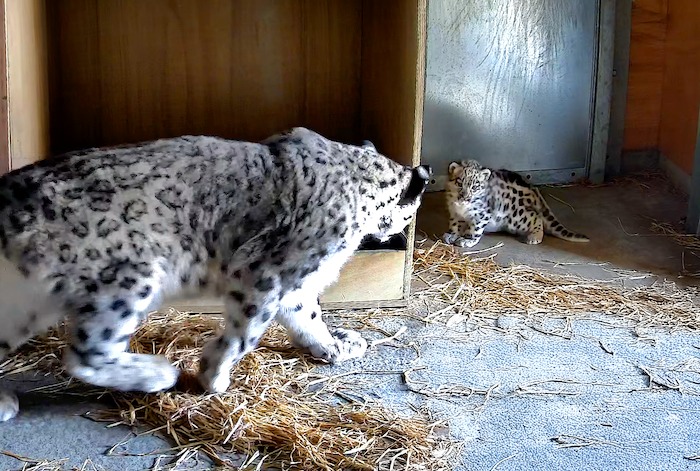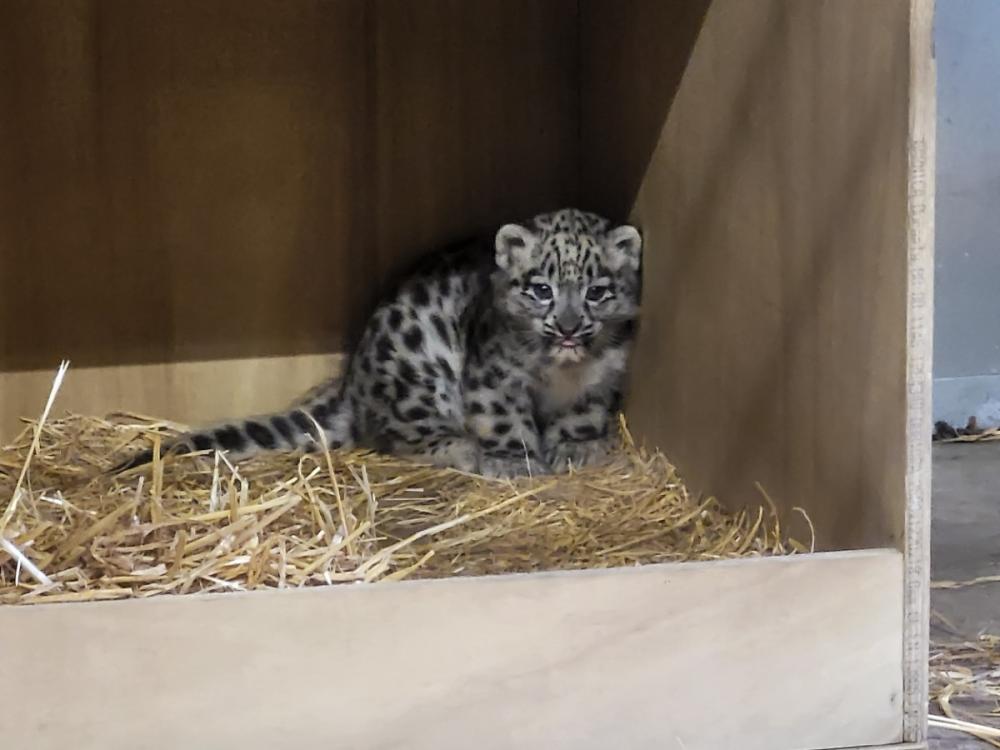search
date/time
 | Yorkshire Times Weekend Edition |

Lucy Brown
Features Writer
6:00 AM 24th July 2025
nature
Hidden Cameras Have Captured A First Glimpse Of A Rare Snow Leopard Cub At Chester Zoo

Photo: ©Chester Zoo
After arriving to first-time parents Nubra (3) and Yashin (3) on Tuesday 10 June 2025, mum and cub have since spent time quietly tucked away in a cosy den - with all of their adorable early moments caught on the zoo’s ‘den cams’.
Carnivore experts at the zoo say Nubra is showing “excellent maternal instincts” by nursing her new arrival every few hours and always keeping close by - only leaving the den momentarily to feed.
Now, at six-weeks-old, the cub has gained in strength and confidence and could start to venture outside at “any moment.”
Parents Nubra and Yashin were carefully matched together in 2024 as part of an international conservation breeding programme that’s working to ensure a healthy insurance population for the highly endangered species in the world’s leading zoos.
This is the first snow leopard cub to be born at Chester Zoo. It’s a truly historic moment and a real cause for celebration - not just for our teams here but also for the future of this magnificent species globally.
The cub is now just six-weeks-old AND it’s still really early days, but new mum Nubra has taken to motherhood brilliantly and is showing excellent maternal instincts. This is her first cub and she’s doing an exceptional job of caring for her little one - feeding regularly and staying snuggled away in a cosy, behind-the-scenes den, where the pair has been quietly bonding and getting to know one another. Since the cub was born our carnivore team has kept the den area nice and peaceful and stayed well away, instead using CCTV cameras to monitor the cub’s development.
It’s just fantastic to see the cub growing stronger and more confident each day. What’s really exciting is that it could decide to follow mum Nubra outside at any moment to start exploring the outside world.

Photo: ©Chester Zoo
While this birth is a significant moment for snow leopard conservation, our work to help this species thrive extends far beyond our zoo. We’re working alongside The Snow Leopard Trust and communities in countries like Kyrgyzstan to protect snow leopards in the wild, while also improving livelihoods for people who live alongside them.
By doing this we’re helping to reduce human-wildlife conflict by developing sustainable, snow leopard-friendly alternatives to livestock farming - reducing retaliatory killings, which is one of their main threats, and instead promoting peaceful coexistence. It’s an approach that’s already seen success in other areas of the world, and we’re confident we can bring positive change to both people and snow leopards alike.
The birth of a cub here in Chester, alongside our conservation work in the wild, is a powerful symbol of what we can achieve together to help these iconic big cats thrive long into the future.
The cub’s birth follows the opening of Chester Zoo’s Himalayan habitat in May 2024 - a vast, rocky environment that authentically recreates the mountainous terrain of Central Asia using more than 600 tonnes of scree and stone – providing the perfect setting for Nubra and Yashin to settle and start a family.
Zookeepers say they will confirm the sex of the cub at a later date once it has undergone its first health check-up with the zoo’s vets.
.jpg)
Photo: ©Chester Zoo
Scientific Name: Panthera uncia
Habitat: High mountain ranges of Central and South Asia, including the Himalayas
IUCN Status: Vulnerable to extinction
Threats in the Wild: Habitat loss, poaching and human-wildlife conflict
Distinctive Features: Thick fur for insulation, large paws for balance on steep terrain, and a long tail for balance and warmth.
Adaptations: Exceptional leaping and athletic ability, enabling them to cover great distances in pursuit of prey animals.
Conservation Status: Chester Zoo actively participates in conservation breeding programs to support the survival of snow leopards.
Also by Lucy Brown...
The Iconic Musical Fiddler On The Roof ReturnsMore Than 10 Million Trees Planted Across The ‘Northern Forest’Maundy Thursday 2025A Winter Of Wonder: February Half Term At The Bowes MuseumAgainst The Odds: Zoo Celebrates Birth Of New Endangered Froglets, After Deadly Fungus Rescue Mission